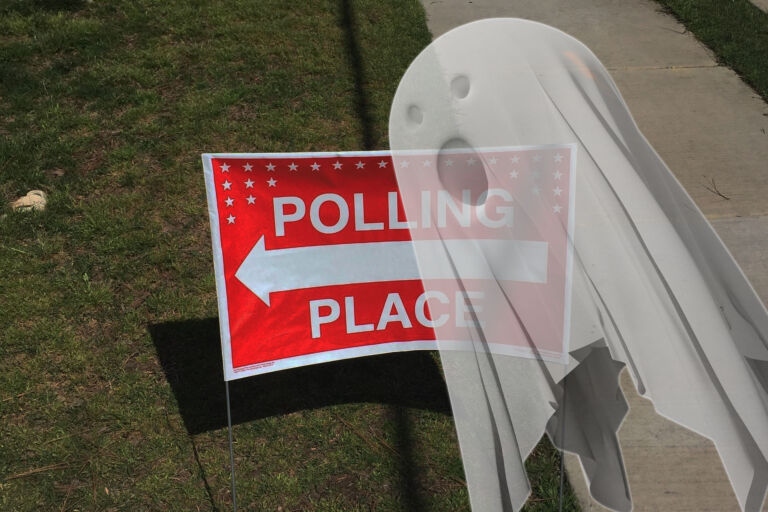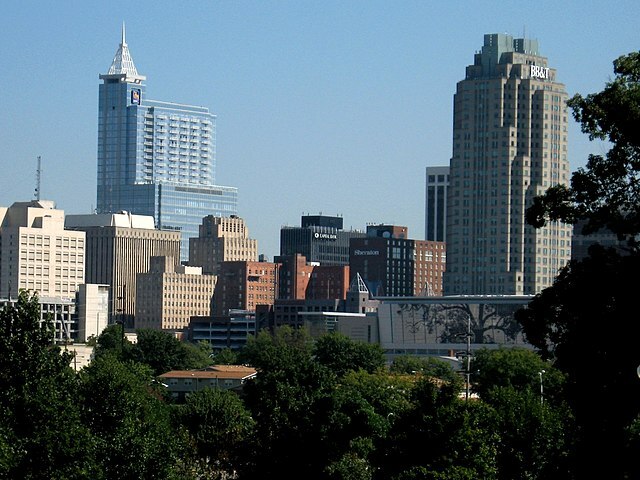Earlier this week, I got a call from a reporter at The News & Observer asking for comment on a proposed “bicycle superhighway” that would run parallel to I-40 for five miles between Raleigh and RTP. He figured I would have something to say on the matter, given a report I authored last year on bike lanes in Raleigh and other parts of North Carolina and an op-ed published around the same time in the N&O.
This newest scheme is being supported by Sig Hutchinson, a Wake County Commissioner and lover of bike lanes, who presented this “concept” to the Triangle J Council of Governments (TJCOG) on February 17. The notes from that meeting offer the best information available, but they’re still pretty short on details. Here’s what we do know.
- The lanes would be five miles long and run parallel to I-40 from Trenton Road to Airport Boulevard,
- be 14-16 feet wide,
- accommodate speeds of 16-19 mph, and
- include tunnels under interchanges so that bicyclists are able to avoid motorized traffic.
That leaves quite a lot that we don’t know at all.
First, we have no idea what this project is likely to cost. The News & Observer says that greenways average a cost of around $1 million per mile, and quotes Hutchinson as saying that this project would probably cost “something comparable to that.” But is that true? Raleigh’s greenway design standards assume a typical width of 10 feet. There’s some variance, but there’s little doubt this bikeway would be significantly wider. Additionally, those tunnels are red flags to me. I have absolutely no idea how much it costs to tunnel under an interchange, but it can’t be cheap. Looking at the proposed route, we’re talking about at least two tunnels in just the proposed five miles. So while we don’t have a figure, I’m going to assume that it will be well over $1 million per mile.
There’s also an interesting comment in the TJCOG notes that calls on proponents to “brand it consistently across jurisdictions, talk it up as a regional bike route.” But the proposed five miles falls within Wake County only. It does cross the Raleigh/Morrisville line, but “across jurisdictions” and “regional bike route” sound farther reaching to me. Is this the whole plan or is it just phase one? The TJCOG meeting notes also talk about needing “connections to RTP and ultimately Durham.” And there is a comment that they should “Consider adding the Triangle Bikeway and accompanying connections into the next update of the CORE Bicycle & Pedestrian Plan.” (Emphasis added.) That sounds like more bike lanes, more bikeways, and more money.
All of this would be consistent with the aspirational tone that so often accompanies discussions of bike lanes in Raleigh. The quotes from Sig Hutchinson throughout the N&O piece have an almost dreamy quality. “Now imagine sitting in traffic and watching bikes fly by you, people who’ll be home playing with their kids before you get off the interstate.” “I want this to be a bikeway superhighway. I would like to start thinking about interchanges and bore through them so you don’t have to come up at [sic] a grade and stop. I just want a straight shot, so you can be going 15-17 miles per hour on your bike, just cruising up that road.”
I don’t mind dreams. I just don’t like paying for them with limited transportation dollars. The vast majority of residents who pay those taxes will never use this route. They’ll never use a bike lane or a “bicycle superhighway” at all.
Our roads are fundamental to the functioning of our economy. They’re the means by which the overwhelming majority of people get to work, shops, and places to conduct business. They’re the way almost all children get to school, whether in parents’ cars or on buses. Despite what Sig Hutchinson may think, most people do not want to commute to work by bike. We know this because we actually do have data from the U.S. Census Bureau that tell us that 0.6% of Raleigh commuters use a bike. The data also tell us that, the longer the distance of the commute, the less likely people are to want to bike it.
And there’s good reason for that. Traveling 15 to 17 mph on a bike sounds great, and it may, indeed, be faster than short stretches of I-40 during rush hour. But it’s not as fast as a car across a whole journey from home to a job. Depending on the sort of work people do, it can be difficult to bicycle to work and still arrive looking professional. For much of the year, it’s either too hot or too cold to comfortably ride a bike for very long. And many people are dropping kids off on the way to work or stopping on the way home to get groceries for dinner. Those things are harder on a bike.
All those factors explain why, despite great growth in available bike lanes, there’s been very little growth in biking as a means of transportation. Recreation, yes, but not transportation. This “bicycle superhighway” won’t change that. It will be a great amenity for a small number of people who prefer bicycling despite its drawbacks, but it will remain a very small group indeed. Such a project should not be the way that we spend everyone’s hard-earned tax dollars.


